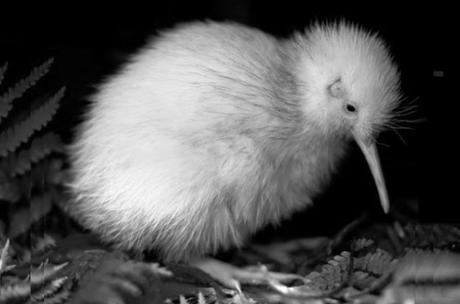Feeling hardly intrepid and barely inspired, nevertheless it's time to go once more into the imaginarium... from which I concoct this antipodean cautionary tale, based on true events* although I've embellished it liberally and all the names and locations have been given a make-over.
Some decades ago, before the age of automation and when lighthouses still required resident lighthouse keepers, a change of personnel became necessary at the lighthouse on Waroo, a small island just off New Zealand's north coast. Bert Meade had been manning the Waroo light for fifteen years but infirmity was taking its toll and so a replacement was appointed, a younger man to take up the post.
Bert had lived on Waroo alone for all that time but Jack Taylor, his successor, decided to take his cat Tigger with him for company. Once the slightly unnerving sea-crossing had been negotiated, Jack and his cat soon made themselves at home on their little island paradise.
For Jack, lighthouse duties aside, he revelled in the solace and the scenery, planting crops, fishing, reading. Tigger revelled in being tiggerish. They'd only been in residence for a week when Jack awoke one morning to find the present of a dead bird laid outside his bedroom door. He thought he recognised it as a kiwi, but it was pure white and quite small. Of course, he knew Tigger was the culprit but he assumed the bird must have been rejected by its family for being albino, a freak of nature and doomed to finish up as easy prey. He burned the corpse and didn't berate the cat.

The Little White Kiwi
Two days later, Tigger came home with another small white kiwi clamped in his maw. He deposited it proudly at Jack's feet. The bird was dead but still warm. Once again Jack incinerated the little body and refrained from taking Tigger to task, though it did occur to him to wonder if there might be a colony of mutant white kiwis on Waroo. He decided to comb the island to satisfy this curiosity, but ended up spending a couple of days in fruitless search.Over the course of the following week, four more white kiwis of varying sizes were brought back to the lighthouse. Again Jack went searching for the birds, again he returned empty-handed having got neither sight nor sound of them.
On the morning that he found the seventh and eighth white corpses laid at his door, he decided to preserve them in the refrigerator overnight and when the monthly supply boat arrived at Waroo, Jack wrapped the birds up and gave them to the captain to take back to the mainland. Maybe someone at Auckland university would be interested in the find, might be able to do some analysis and shed some light on this aberration.
By the time the supply boat returned to Waroo a month later, Tigger had carried another nineteen little white kiwi corpses back to Jack. The lighthouse keeper had contemplated locking his cat in the lighthouse but couldn't bring himself to place his companion under house arrest and so the killing spree had gone on. The news from Auckland was exciting. The bird could be a previously unknown strain of kiwi. The university would shortly be sending a scientific team out to the island. In the meantime, could the lighthouse keeper ship his cat back to the mainland for the well-being of the colony of birds?
Though Jack, the ship's captain and mate searched and called for Tigger for the best part of the afternoon, he could not be found and the supply boat had to depart catless. It was late into the night before Tigger broke cover.
The marauder had increased his haul to forty known victims before Jack Taylor decided he had to act. Tigger was finally incarcerated, much to his disgust. His confinement was in its tenth day when he managed to elude his captor and race off to the interior of the island.
By the time the team from Auckland university arrived on Waroo with their tents, nets, cages and news that yes, this definitely was a hitherto unknown and quite distinct sub-species of the bird, every last Little White Kiwi had been pursued to extinction.
Jack Taylor helped the team collect up the remains of Tigger's rampaging. Some of the bodies were taken back to Auckland as specimens for further analysis and for posterity. The rest Jack Taylor buried in a small grave which he marked with a headstone reading 'Here Lies Little White'. Tigger took to napping on that grave on slow, sunny afternoons of which there were many.
* For those of you traumatised by what I've narrated above, in real life the bird in question was not a kiwi but a species of wren - the walking wren - so-called for the obvious reason that it was flightless. It had (d)evolved thus because it had lived for so long (thousands of years) in an environment where it had no natural predators. Of course that doesn't make what happened any better.
For those of you inclined to think ill of Tigger (real name not known) for wiping out an entire species in under three months, almost before it had been classified in fact, he was just doing what comes naturally to cats.
Thanks for reading, S ;-) Email ThisBlogThis!Share to TwitterShare to Facebook
Reactions:
